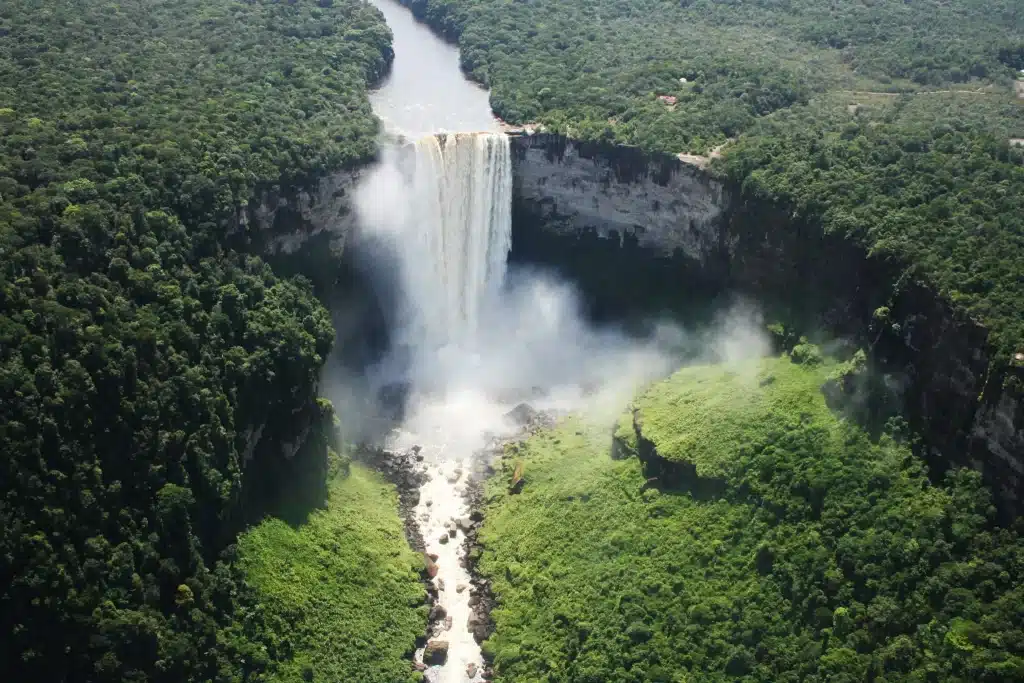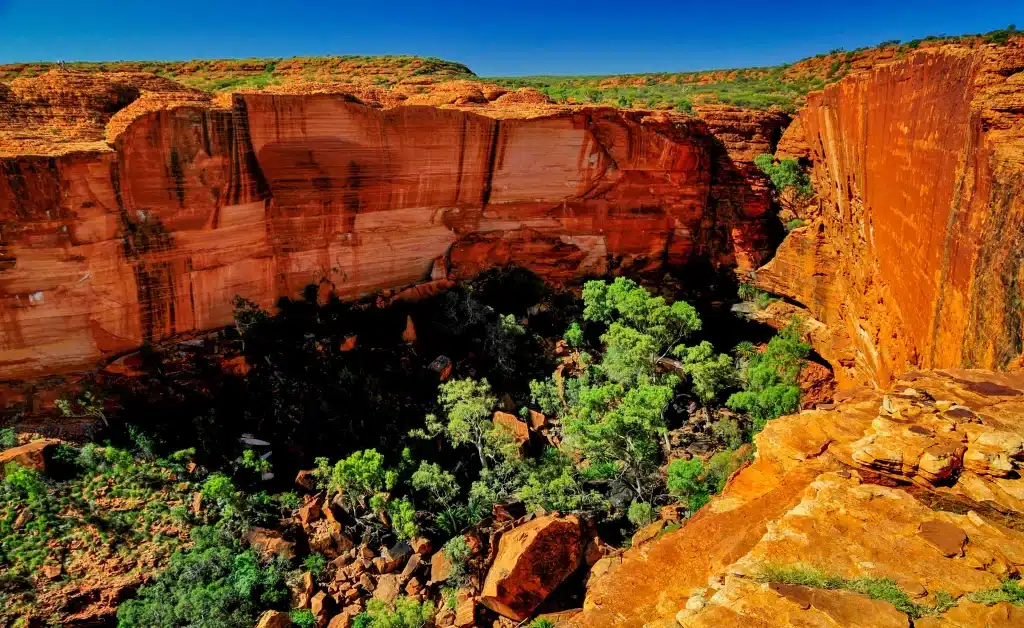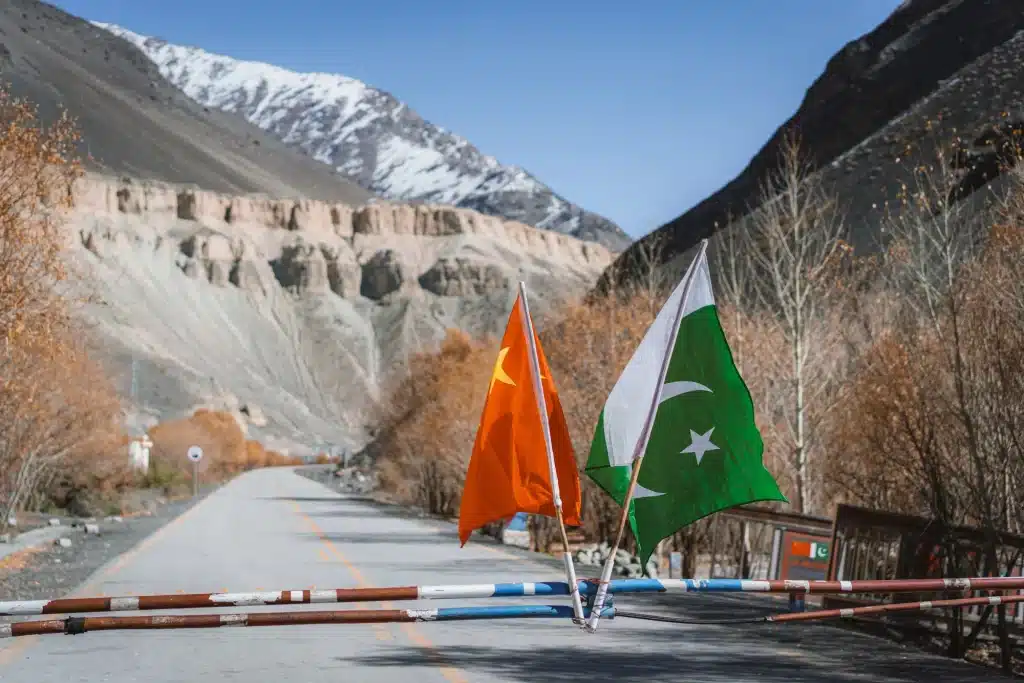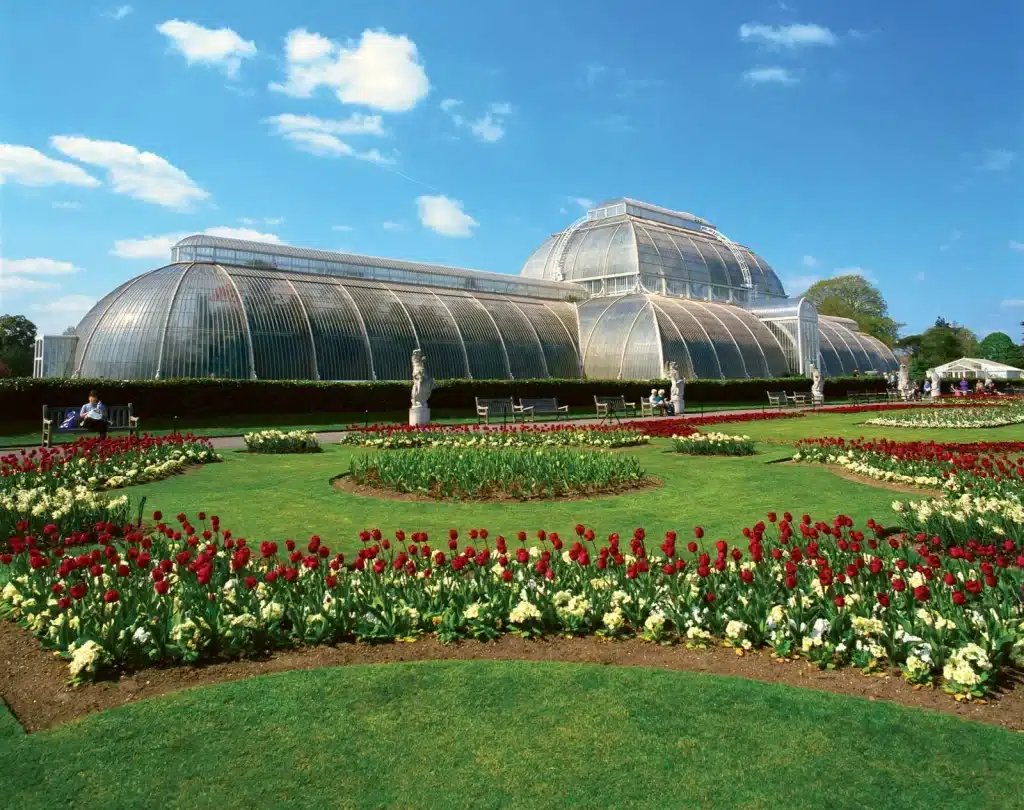Are you curious about the world’s most captivating landmarks and things that start with the letter “K”?
You might be surprised to discover some of these incredible places!
From ancient ruins to modern marvels, these 30 famous landmarks showcase the diversity and wonder of our planet.
Each destination holds a unique story waiting to be explored, and they all share one thing in common – they’re all things that start with “K”!
Venture on a virtual journey to uncover the secrets behind these extraordinary sites.
Learn about their fascinating histories, awe-inspiring architecture, and the cultures that shaped them.
Join us as we count the 30 most iconic landmarks beginning with “K,” and get ready to add exciting new destinations to your travel bucket list!
Find the amazing things that start with “K” and explore the world through a new lens.
1. Kremlin (Russia)

The Kremlin, a fortified complex in Moscow’s heart, symbolizes Russian power and resilience.
- Major Attractions: UNESCO World Heritage Site featuring palaces, cathedrals, government buildings, and the Armoury Chamber with royal treasures and artifacts.
- Popular Activities: Exploring the Kremlin’s walls and towers, admiring the onion domes of Cathedral Square, and visiting the official residence of the Russian president.
- Famous Dishes: Traditional Russian cuisine, such as borscht, pelmeni, and caviar.
- Best Time to Visit: May to September for mild weather and longer daylight hours.
This UNESCO World Heritage Site features a stunning ensemble of palaces, cathedrals, and government buildings, each showcasing unique architectural styles from different eras.
The Kremlin’s walls and towers, some dating back to the 15th century, have witnessed pivotal moments in Russia’s history.
Visitors can explore the Armoury Chamber, which houses an impressive collection of royal treasures and artifacts, or admire the vibrant onion domes of Cathedral Square.
The Kremlin continues to serve as the official residence of the Russian president, making it a true icon of the nation’s political and cultural heritage.
2. Kronborg Castle (Denmark)

Perched on the northeastern tip of Zealand, Kronborg Castle is a magnificent Renaissance structure that has inspired storytellers for centuries.
- Major Attractions: Renaissance castle that inspired Shakespeare’s Hamlet, featuring grand halls, chambers, and “Hamlet’s Bastion.”
- Popular Activities: Following in the footsteps of Hamlet, learning about the castle’s role in controlling the Baltic Sea and watching performances of Shakespeare’s plays.
- Famous Dishes: Danish specialties like smørrebrød, frikadeller, and wienerbrød.
- Best Time to Visit: June to August for pleasant weather and outdoor activities.
Most notably, this Danish castle served as the setting for Shakespeare’s legendary play, Hamlet.
Visitors can follow the tragic prince’s footsteps as they explore the castle’s grand halls, chambers, and the famous “Hamlet’s Bastion.”
The castle’s strategic location on the Øresund Strait allowed it to control the entrance to the Baltic Sea, making it a vital center for collecting tolls from passing ships.
Today, Kronborg Castle is a UNESCO World Heritage Site and hosts performances of Shakespeare’s plays, allowing visitors to experience the magic of Hamlet in its original setting.
3. Kiyomizu-Dera (Japan)
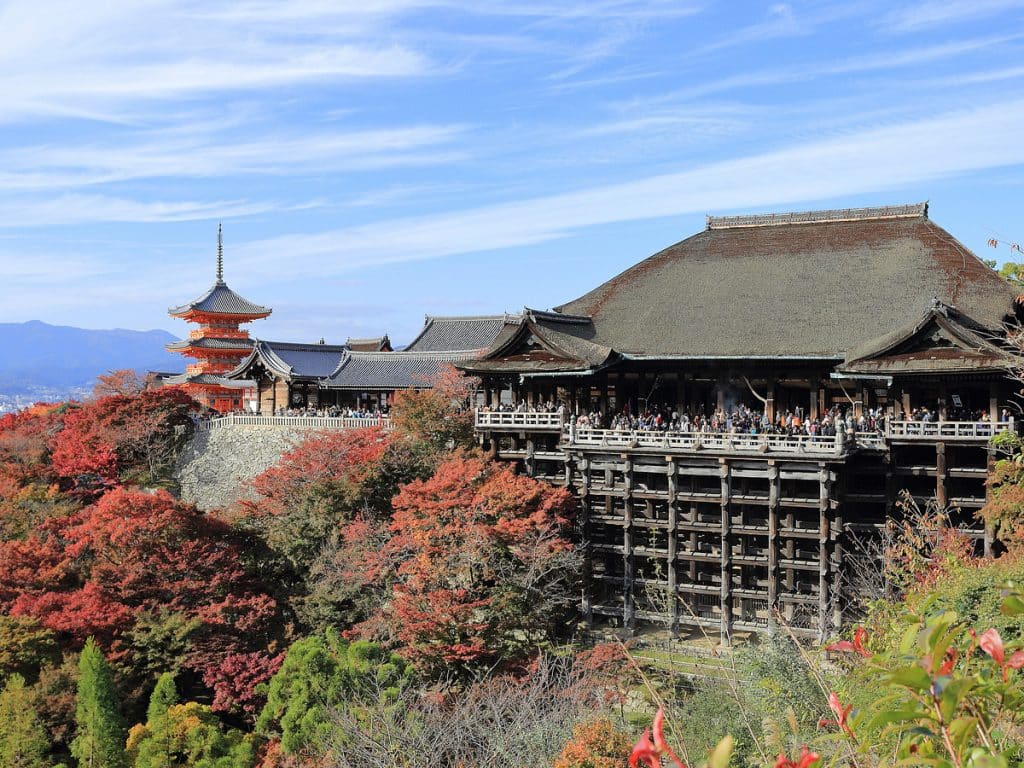
Kiyomizu-dera, an ancient Buddhist temple in Kyoto, is a testament to Japan’s rich spiritual heritage and architectural prowess.
- Major Attractions: This ancient Buddhist temple has a wooden stage offering stunning views, a nail-less main hall, and a three-streamed waterfall believed to grant wishes.
- Popular Activities: Exploring the temple grounds, drinking from the sacred waterfall, and admiring cherry blossoms or autumn foliage.
- Famous Dishes: Kyoto specialties include kaiseki cuisine, tofu dishes, and matcha green tea.
- Best Time to Visit: Spring for cherry blossoms or fall for colorful foliage.
Founded in 778 AD, this UNESCO World Heritage Site is famous for its wooden stage that juts out from the main hall, offering visitors a breathtaking view of the surrounding cherry and maple trees.
The main hall, built without nails, is a marvel of traditional Japanese construction techniques.
Visitors can also drink from the temple’s three-streamed waterfall, believed to grant wishes for longevity, success, and love.
The temple’s grounds are particularly stunning during the spring cherry blossom season and the fall when the leaves turn vibrant shades of red and orange.
4. Konark Sun Temple (India)

The Konark Sun Temple, located in the eastern Indian state of Odisha, is a stunning example of 13th-century architecture dedicated to the Hindu sun god Surya.
- Major Attractions: A 13th-century temple dedicated to the sun god Surya, designed as a colossal chariot with intricately carved stone wheels and horses.
- Popular Activities: Admiring the temple’s exquisite stone carvings, learning about the temple’s history and symbolism, and watching the sunset over the Bay of Bengal.
- Famous Dishes: Odia cuisines, such as pakhala, chhena poda, and seafood dishes.
- Best Time to Visit: October to February for comfortable weather and clear skies.
This UNESCO World Heritage Site is designed as a colossal chariot with intricately carved stone wheels and horses, symbolizing the sun god’s ride across the sky.
The temple’s walls are adorned with exquisite stone carvings depicting various aspects of life, from religion and mythology to everyday scenes.
Although the main temple structure has collapsed over time, the remaining ruins and the impressive carved figures on the walls continue attracting visitors worldwide.
5. Kruger National Park (South Africa)

Kruger National Park, one of Africa’s largest game reserves, is a wildlife lover’s paradise.
- Major Attractions: One of Africa’s largest game reserves, home to diverse wildlife, including the Big Five (lions, leopards, elephants, rhinos, and Cape buffalo).
- Popular Activities: Going on guided safari tours, spotting various animal species, birdwatching, and learning about conservation efforts.
- Famous Dishes: South African braai (barbecue), biltong, and local game meat dishes.
- Best Time to Visit: May to September for the best wildlife viewing opportunities.
Spanning nearly 2 million hectares, this vast park is home to an incredible array of animals, including the famous Big Five: lions, leopards, elephants, rhinos, and Cape buffalo.
The park’s diverse habitats, from open grasslands to dense forests, support over 500 bird species, 100 reptile species, and numerous plant species.
Visitors can take guided safari tours to spot the park’s amazing wildlife and learn about ongoing conservation efforts to protect endangered species and their habitats.
Kruger National Park’s duty to preserve South Africa’s natural heritage makes it a must-visit destination for nature enthusiasts.
6. Karnak Temple (Egypt)

The Karnak Temple Complex, located near Luxor in Egypt, is a vast open-air museum showcasing the incredible architectural achievements of ancient Egyptians.
- Major Attractions: Vast open-air museum showcasing ancient Egyptian architecture, featuring the Great Hypostyle Hall with 134 massive columns, temples, chapels, and sacred lakes.
- Popular Activities: Exploring the temple complex, admiring hieroglyphs and reliefs, learning about ancient Egyptian religious practices and daily life.
- Famous Dishes: Egyptian cuisine, such as kushari, ful medames, and ta’meya.
- Best Time to Visit: October to April for mild temperatures and low humidity.
Constructed over more than 2,000 years, this sprawling complex was the main place of worship for the Theban Triad, which included the gods Amun, Mut, and Khonsu.
The temple’s most iconic feature is the Great Hypostyle Hall, which contains 134 massive columns arranged in 16 rows, each intricately decorated with hieroglyphs and reliefs.
The complex also includes several other temples, chapels, and sacred lakes, providing valuable insight into ancient Egyptian religious practices and daily life.
As one of the world’s largest religious sites, the Karnak Temple Complex is a testament to ancient Egypt’s power and influence.
7. Kennedy Space Center (USA)
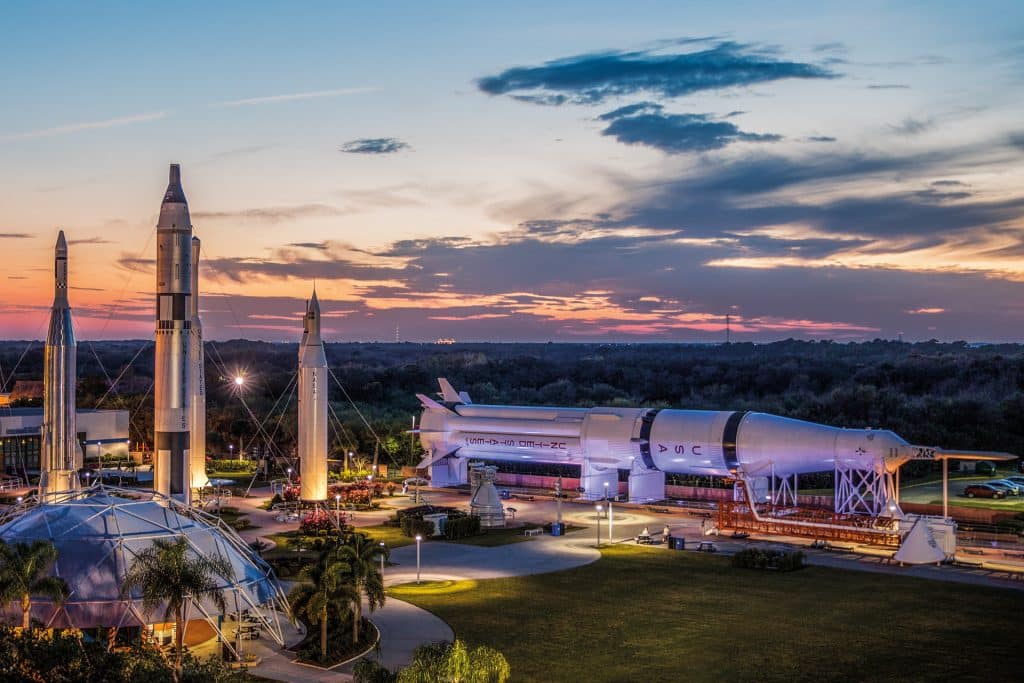
The Kennedy Space Center on Florida’s east coast has been at the forefront of America’s space exploration efforts since the 1960s.
- Major Attractions: The iconic facility is at the forefront of America’s space exploration efforts, featuring the Vehicle Assembly Building and the Apollo/Saturn V Center.
- Popular Activities: Touring the center’s facilities, learning about historic missions like the Apollo and Space Shuttle programs, and discovering ongoing and future space missions.
- Famous Dishes: American classics like hamburgers, hot dogs, pizza, and space-themed treats.
- Best Time to Visit: Year-round, but spring and fall offer mild weather and fewer crowds.
This iconic facility has been the launch site for numerous historic missions, including the Apollo program that landed the first humans on the moon and the Space Shuttle program that greatly expanded our understanding of the universe.
Visitors can tour the center’s facilities, including the famous Vehicle Assembly Building, where rockets are prepared for launch, and the Apollo/Saturn V Center, which houses a restored Saturn V rocket.
The Kennedy Space Center continues to play a vital role in space exploration, with ongoing missions to the International Space Station and plans for future missions to the moon and Mars.
8. Chichen Itza, Kukulkan Pyramid (Mexico)

Chichen Itza, an ancient Mayan city in Mexico’s Yucatan Peninsula, is home to one of the most remarkable examples of Mayan architecture: the Kukulkan Pyramid, also known as El Castillo.
- Major Attractions: This ancient Mayan city has the remarkable Kukulkan Pyramid, which features nine square terraces, a shadow illusion during equinoxes, and other impressive structures.
- Popular Activities: Exploring the ancient city, learning about Mayan mythology and architecture, and witnessing the equinox phenomenon.
- Famous Dishes: Yucatecan cuisines, such as cochinita pibil, sopa de lima, and papules.
- Best Time to Visit: November to March for pleasant weather and fewer crowds.
This massive step pyramid stands 30 meters tall and consists of nine square terraces, each representing one of the underworld levels in Mayan mythology.
During the spring and fall equinoxes, the pyramid casts a shadow that creates the illusion of a serpent descending the stairs, a sight that draws thousands of visitors yearly.
The pyramid is just one of many impressive structures at Chichen Itza, including the Great Ball Court, the Temple of the Warriors, and the Observatory.
9. Kaieteur Falls (Guyana)
Kaieteur Falls, located in the heart of Guyana’s pristine rainforest, is a natural wonder that captivates visitors with its raw beauty and power.
- Major Attractions: Stunning single-drop waterfall in the heart of Guyana’s pristine rainforest, surrounded by diverse flora and fauna in Kaieteur National Park.
- Popular Activities: Hiking through the rainforest, spotting rare species like the golden frog, and marveling at the breathtaking waterfall.
- Famous Dishes: Guyanese cuisine, such as pepperpot, cook-up rice, and roti.
- Best Time to Visit: August to November for the best waterfall flow and weather conditions.
This single-drop waterfall plunges 226 meters into the gorge below, making it one of the world’s tallest waterfalls.
The falls are part of the Potaro River, which flows through the Kaieteur National Park, a protected area known for its diverse flora and fauna.
The park is home to rare species, such as the golden frog, found only in the area around the falls.
The breathtaking sight of the massive waterfall amidst the untouched wilderness is an unforgettable experience highlighting this natural treasure’s ecological significance.
10. Nazca Lines, Kondor Geoglyph (Peru)

The Nazca Lines, a series of ancient geoglyphs etched into the desert floor of southern Peru, have puzzled archaeologists and visitors alike for decades.
- Major Attractions: Ancient geoglyphs etched into the desert floor, including the impressive Kondor geoglyph with a 120-meter wingspan.
- Popular Activities: Viewing the geoglyphs from observation towers or aerial tours and learning about the various theories surrounding their creation and purpose.
- Famous Dishes: Peruvian cuisine, such as ceviche, lomo saltado, and ají de gallina.
- Best Time to Visit: December to March for clear skies and optimal viewing conditions.
Among the most impressive geoglyphs is the Kondor, a massive representation of a condor with a wingspan stretching over 120 meters.
Like the other Nazca Lines, the Kondor geoglyph was created by removing the dark surface rocks to reveal the lighter soil beneath, a technique that has allowed the designs to endure for centuries.
The purpose of these geoglyphs remains a mystery, with theories ranging from astronomical calendars to religious symbols.
Regardless of their origin, the Nazca Lines and the Kondor geoglyph inspire wonder and curiosity in all who witness their enigmatic beauty.
11. Kakadu National Park (Australia)
Kakadu National Park, located in Australia’s Northern Territory, is a UNESCO World Heritage Site that offers a unique blend of natural beauty and Aboriginal cultural heritage.
- Major Attractions: UNESCO World Heritage Site has diverse landscapes, wetlands teeming with wildlife, ancient rock formations, and one of the world’s largest concentrations of Aboriginal rock art.
- Popular Activities: Hiking, taking scenic flights, cruising along the Yellow Water Billabong, and discovering ancient Aboriginal rock art.
- Famous Dishes: Australian bush tucker, crocodile, kangaroo, and barramundi.
- Best Time to Visit: May to October for dry weather and easier access to park attractions.
The park covers nearly 20,000 square kilometers of diverse landscapes, from wetlands teeming with wildlife to ancient rock formations and towering escarpments.
Visitors can explore the park’s many hiking trails, take a scenic flight over the rugged terrain, or cruise along the Yellow Water Billabong to spot crocodiles and exotic birds.
Kakadu is also home to one of the world’s largest concentrations of Aboriginal rock art, with some paintings dating back over 20,000 years.
These ancient artworks provide a fascinating insight into the spiritual beliefs and daily lives of the region’s traditional owners, making Kakadu a must-visit destination for those seeking to connect with Australia’s rich cultural heritage.
12. King’s Canyon (Australia)
King’s Canyon, situated in the heart of Australia’s Red Centre, is a natural wonder showcasing the outback’s rugged beauty.
- Major Attractions: Natural wonder in Australia’s Red Centre, featuring towering sandstone cliffs, deep gorges, and the lush Garden of Eden oasis.
- Popular Activities: Hiking the Kings Creek or Rim Walk and marveling at unique geological features like the Lost City and the Amphitheatre.
- Famous Dishes: Australian outback cuisine, such as damper bread, bush tucker, and grilled meats.
- Best Time to Visit: April to September for milder temperatures and better hiking conditions.
The canyon, formed over millions of years by erosion, features towering sandstone cliffs, deep gorges, and a lush oasis called the Garden of Eden.
Visitors can explore the canyon’s many hiking trails, ranging from the easy 2-kilometer Kings Creek Walk to the challenging 6-kilometer Rim Walk, which offers breathtaking views of the surrounding desert landscape.
Whether you’re a seasoned hiker or simply looking to immerse yourself in the raw beauty of the Australian outback, King’s Canyon is an unforgettable destination that should not be missed.
13. Kuwait Towers (Kuwait)
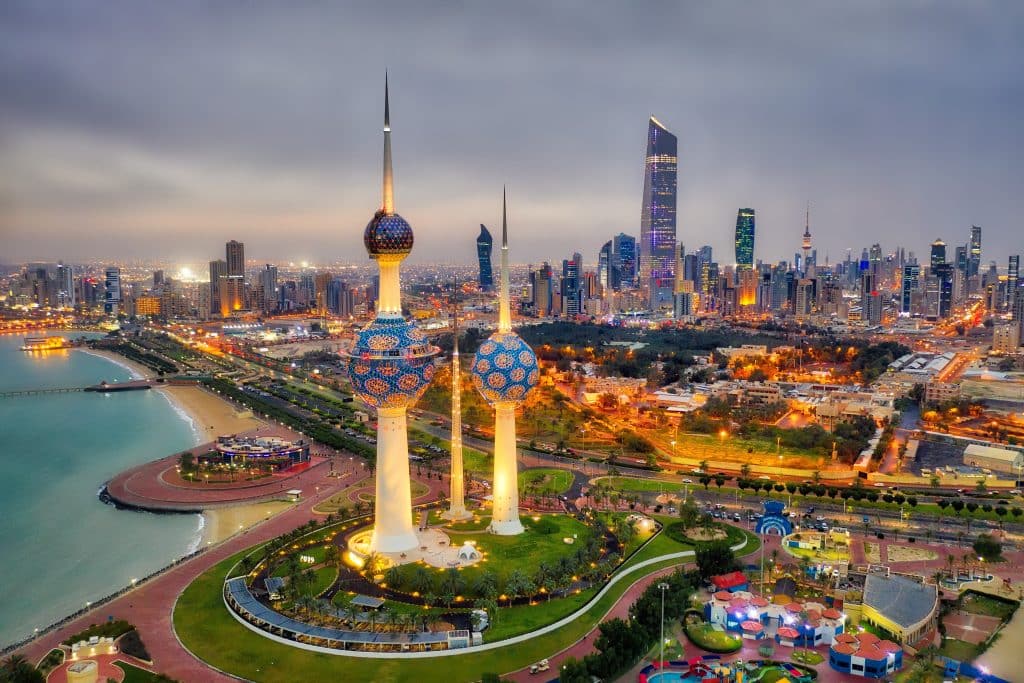
The Kuwait Towers, a trio of slender structures rising above Kuwait City’s skyline, have become an iconic symbol of the nation’s modernity and prosperity.
- Major Attractions: This iconic trio of slender structures symbolizes Kuwait’s modernity and prosperity. It features a rotating observation deck and restaurant with panoramic views.
- Popular Activities: Visiting the observation deck, dining at the rotating restaurant, and admiring the towers’ illumination at night.
- Famous Dishes: Kuwaiti cuisine, such as machboos, murabyan, and qouzi.
- Best Time to Visit: November to April for milder temperatures and pleasant weather.
These towers, designed by Swedish architects Sune Lindström and Malene Björn, combine traditional Islamic design elements with modern architectural techniques.
At 187 meters, the main tower features a rotating observation deck and a restaurant with panoramic views of the city and the Persian Gulf.
The towers are particularly striking at night when illuminated by a dazzling display of colored lights.
They withstood the Iraqi invasion in the early 1990s and underwent extensive renovations to maintain their status as a beloved landmark.
14. Knesset (Israel)

The Knesset in Jerusalem is Israel’s unicameral legislature and a powerful symbol of democratic values.
- Major Attractions: Israel’s unicameral legislature in Jerusalem features a distinctive modern design with menorah-shaped windows and traditional Jewish and Middle Eastern architectural elements.
- Popular Activities: Take guided tours to learn about Israel’s political system and the Knesset’s role in shaping the country’s future.
- Famous Dishes: Israeli cuisine, such as falafel, hummus, and shakshuka.
- Best Time to Visit: March to May or September to November for mild weather and fewer crowds.
The Knesset building was designed by Russian-born architect Joseph Klarwein and features a distinctive modern style that incorporates elements of traditional Jewish and Middle Eastern architecture.
The most notable feature of the building is the large menorah-shaped windows on the main facade, which symbolize the connection between modern Israel and its ancient heritage.
Visitors can take guided tours of the building to learn about Israel’s political system and the role of the Knesset in shaping the country’s future.
As a focal point of Israeli politics and a symbol of the nation’s democratic ideals, the Knesset holds immense significance for Israelis and anyone interested in the complexities of Middle Eastern politics.
15. Krak des Chevaliers (Syria)

Krak des Chevaliers is a well-preserved Crusader castle in western Syria. It is a stunning example of medieval military architecture.
- Major Attractions: Well-preserved Crusader castle showcasing medieval military architecture, with impressive walls, towers, and moats.
- Popular Activities: Exploring the castle’s architecture and learning about its role during the Crusades.
- Famous Dishes: Syrian cuisine, such as kibbeh, shawarma, and fattoush.
- Best Time to Visit: March to May or September to November for mild temperatures and less rainfall.
Built in the 11th century and expanded over the following centuries, this hilltop fortress was a key stronghold for the Knights Hospitaller during the Crusades.
The castle’s impressive walls, towers, and moats were designed to withstand sieges and protect the inhabitants from invading armies.
Krak des Chevaliers offers visitors a glimpse into the Crusaders’ lives and the Middle Ages’ complex political and religious landscape.
16. Kocatepe Mosque (Turkey)
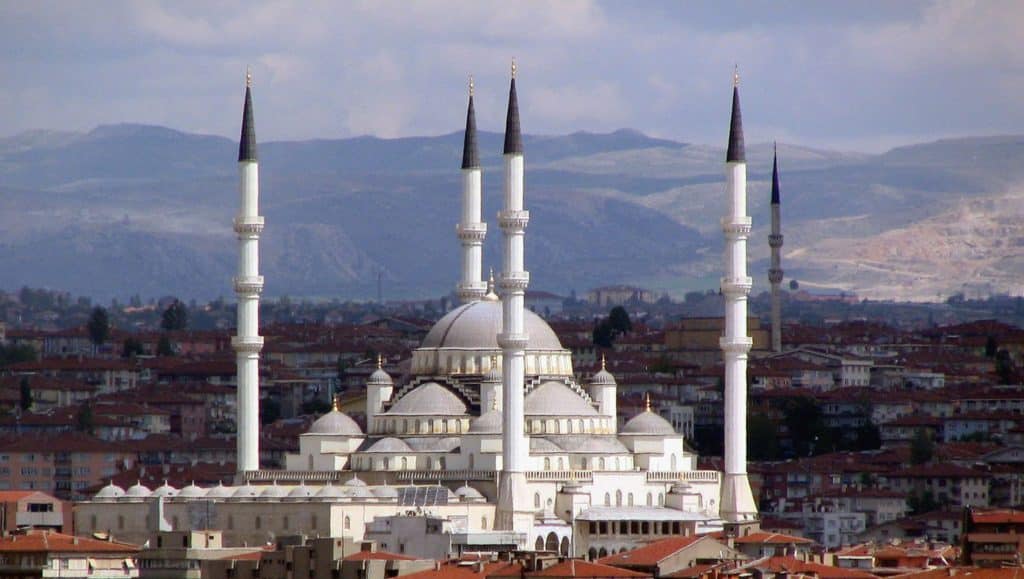
The Kocatepe Mosque, situated in the heart of Ankara, is the largest mosque in Turkey and a striking example of modern Islamic architecture.
- Major Attractions: The largest mosque in Turkey, blending traditional Ottoman and modern architectural styles, featuring a grand central dome, four slender minarets, and a spacious courtyard.
- Popular Activities: Admiring the mosque’s architecture, exploring the intricate tilework, calligraphy, and stained-glass windows, and experiencing the serene atmosphere.
- Famous Dishes: Turkish cuisine, such as kebabs, meze, and baklava.
- Best Time to Visit: April to May or September to November for mild weather and fewer crowds.
Completed in 1987, the mosque blends traditional Ottoman and modern architectural styles with its grand central dome, four slender minarets, and spacious courtyard.
The mosque’s interior is adorned with intricate tilework, calligraphy, and stained-glass windows, creating a serene and awe-inspiring atmosphere for worshippers and visitors alike.
As a major landmark in Turkey’s capital city, the Kocatepe Mosque symbolizes the country’s religious heritage and a gathering place for the community.
17. Kumbhalgarh Fort (India)
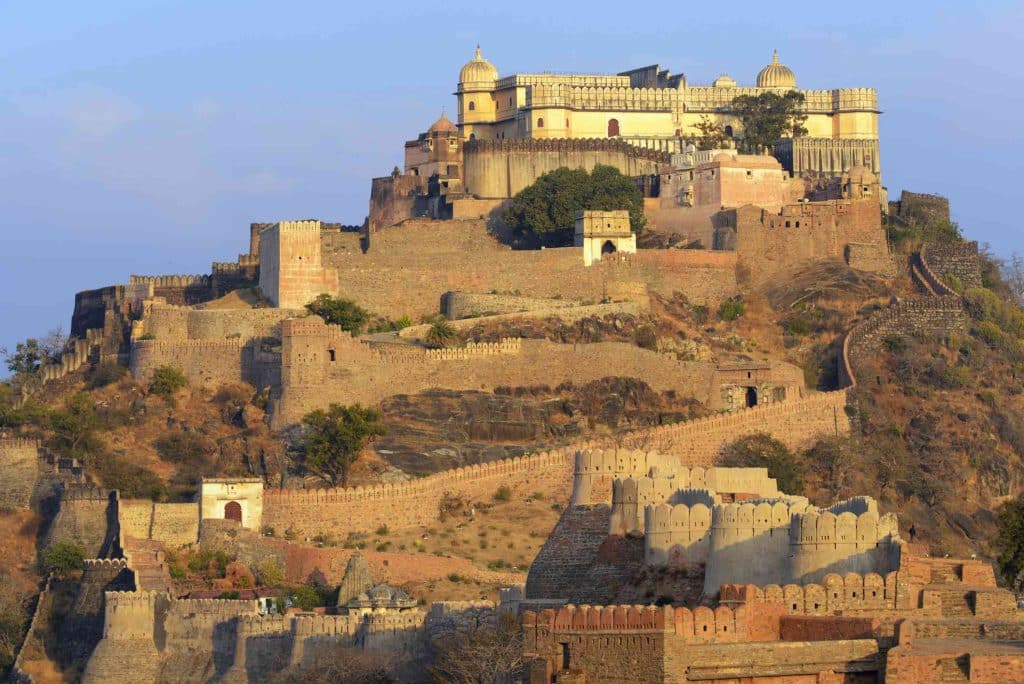
Kumbhalgarh Fort, a massive 15th-century fortress in the Aravalli Hills of Rajasthan, is a testament to the Mewar dynasty’s military prowess and architectural skill.
- Major Attractions: Massive 15th-century fortress with the second-longest wall in the world, featuring a complex network of walls, towers, gateways, palaces, temples, and stepped wells.
- Popular Activities: Exploring the fort’s architecture, learning about the Mewar dynasty’s history, and admiring the stunning views of the Aravalli Hills.
- Famous Dishes: Rajasthani cuisine, such as dal baati churma, laal maas, and ker sangri.
- Best Time to Visit: October to March for pleasant weather and cool temperatures.
Built by Rana Kumbha, this formidable structure boasts the second-longest wall in the world, stretching over 36 kilometers and encompassing an area of 1,100 acres.
The fort’s complex network of walls, towers, and gateways was designed to protect the Mewar rulers from invading armies.
Today, Kumbhalgarh Fort is a UNESCO World Heritage Site and a popular tourist destination.
18. Kuranda (Australia)
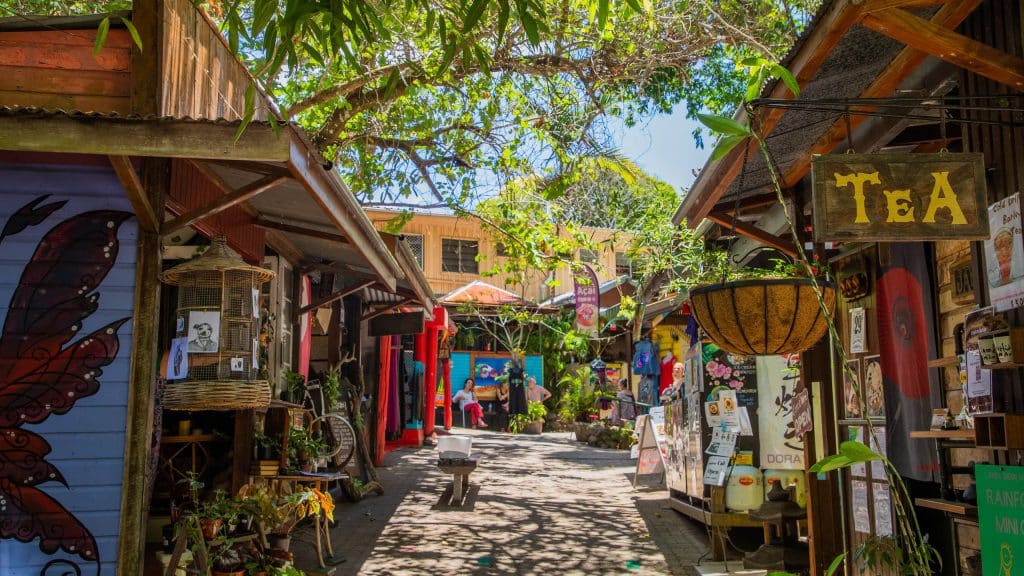
Kuranda, a picturesque village in the heart of the Queensland rainforest, is a popular destination for nature lovers and those seeking a unique cultural experience.
- Major Attractions: Picturesque village in the Queensland rainforest, known for its vibrant arts and crafts scene, galleries, markets, and workshops.
- Popular Activities: Visiting the Australian Butterfly Sanctuary, Kuranda Koala Gardens, and Birdworld Kuranda, as well as taking scenic journeys on the Kuranda Scenic Railway or Skyrail Rainforest Cableway.
- Famous Dishes: Australian tropical cuisine, such as barramundi, crocodile, and exotic fruits.
- Best Time to Visit: May to September for dry weather and comfortable temperatures.
Known for its vibrant arts and crafts scene, Kuranda is home to numerous galleries, markets, and workshops showcasing the work of local artists and artisans.
The journey to Kuranda is an experience, with options including the scenic Kuranda Scenic Railway and the Skyrail Rainforest Cableway, offering breathtaking views of the surrounding rainforest and the Barron Gorge National Park.
19. Kingston Penitentiary (Canada)

The Kingston Penitentiary, a former maximum-security prison in Ontario, Canada, is a historic landmark that offers a fascinating glimpse into the country’s penal history.
- Major Attractions: This former maximum-security prison has been turned into a museum, offering insight into Canada’s penal history. It features preserved cells, workshops, and recreational areas.
- Popular Activities: Take guided tours to learn about the prison’s history, discipline, rehabilitation programs, and famous inmates.
- Famous Dishes: Canadian cuisine, such as poutine, beaver tails, and maple syrup-infused dishes.
- Best Time to Visit: For warm weather and outdoor activities, June to September.
Built in the 1830s and operational until 2013, the prison was known for its strict discipline, innovative rehabilitation programs, and famous inmates, including notorious bank robber Tyrone Conn.
As visitors explore the Kingston Penitentiary, they gain a deeper understanding of the challenges and complexities of the Canadian criminal justice system and the impact of incarceration on individuals and society.
20. Kumamoto Castle (Japan)
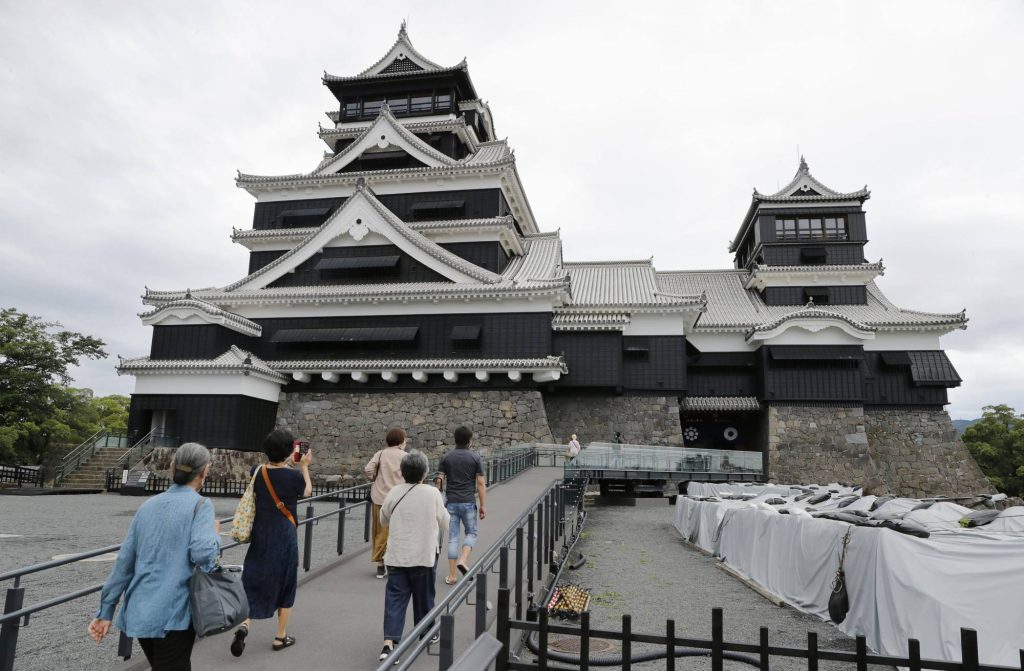
Kumamoto Castle, a majestic fortification in the heart of Kumamoto City, is one of Japan’s largest and most impressive castles.
- Major Attractions: One of Japan’s largest and most impressive castles, featuring an iconic black exterior, towering keeps, stone walls, and beautifully landscaped gardens.
- Popular Activities: Exploring the castle’s turrets, gates, courtyards, and gardens and learning about Japan’s feudal history.
- Famous Dishes: Kumamoto cuisines, such as karashi renkon, Taipei, and basashi.
- Best Time to Visit: March to May for cherry blossom season or October to November for autumn foliage.
Originally built in the early 17th century by the powerful daimyo Kato Kiyomasa, the castle has undergone numerous renovations and reconstructions over the centuries, most recently following the devastating earthquakes of 2016.
The castle’s iconic black exterior, punctuated by towering keeps and stone walls, is a testament to the skill and ingenuity of Japanese castle architects.
Kumamoto Castle symbolizes the city’s resilience and reminds visitors of Japan’s rich feudal history.
21. Kyoto Imperial Palace (Japan)
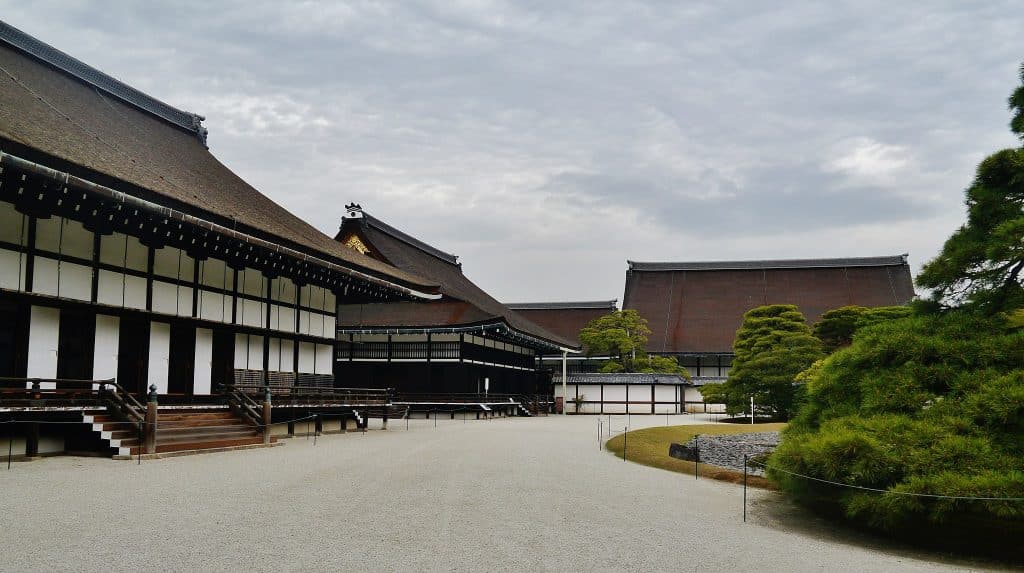
The Kyoto Imperial Palace, the former residence of Japan’s Imperial Family, is a stunning example of traditional Japanese architecture and craftsmanship.
- Major Attractions: The former residence of Japan’s Imperial Family features traditional Japanese architecture, beautiful gardens, and historically significant buildings.
- Popular Activities: Exploring the palace grounds, admiring the elegant buildings and gardens, and learning about the Imperial Family’s history and traditions.
- Famous Dishes: Kyoto specialties include kaiseki cuisine, yudofu, and matcha green tea.
- Best Time to Visit: March to May for cherry blossom season or November to December for autumn foliage.
The palace complex includes several historically significant buildings, such as the Shishinden, where important ceremonies were held, and the Otsunegoten, the Emperor’s living quarters.
Visitors can explore the palace grounds and admire the beautiful gardens, which showcase the changing seasons and the Japanese aesthetic of harmonizing nature and architecture.
22. Karakoram Highway (Pakistan/China)
The Karakoram Highway, connecting Pakistan and China, is one of the world’s highest paved roads and a marvel of modern engineering.
- Major Attractions: One of the world’s highest paved roads, traversing stunning mountain landscapes and connecting remote communities.
- Popular Activities: Scenic drives, trekking, and exploring local villages and cultures along the highway.
- Famous Dishes: Pakistani and Chinese cuisines, such as chapli kebab, biryani, and Sichuan hotpot.
- Best Time to Visit: May to October for the best weather conditions and accessibility.
The highway winds through the majestic Karakoram mountain range, offering breathtaking views of snow-capped peaks, glaciers, and deep valleys.
Travelers along the Karakoram Highway can explore remote villages, experience diverse cultures, and witness the incredible natural beauty of the region.
23. Kinkaku-ji (Golden Pavilion) (Japan)

Kinkaku-ji, known as the Golden Pavilion, is a stunning Zen temple in Kyoto, Japan, famous for its gold-leaf-covered exterior.
- Major Attractions: A stunning Zen temple with a gold-leaf-covered exterior, set in a beautiful garden with a mirror-like pond.
- Popular Activities: Admiring the pavilion’s architecture and gold-leaf exterior, strolling through the gardens, and learning about the temple’s history and Zen Buddhism.
- Famous Dishes: Kyoto specialties such as yatsuhashi, tofu dengaku, and green tea.
- Best Time to Visit: December to February for a snow-covered landscape or March to May for cherry blossom season.
The pavilion is set in a beautiful garden with a mirror-like pond, creating a serene and contemplative atmosphere.
Visitors can admire the temple’s architecture, learn about its history and the principles of Zen Buddhism, and find moments of tranquility in the surrounding gardens.
24. Kandy Temple of the Sacred Tooth Relic (Sri Lanka)
The Temple of the Sacred Tooth Relic in Kandy, Sri Lanka, is one of the world’s most important Buddhist pilgrimage sites.
- Major Attractions: This is one of the most important Buddhist pilgrimage sites, housing the sacred tooth relic of the Buddha. It also has stunning architecture and religious ceremonies.
- Popular Activities: Witnessing religious ceremonies, exploring the temple complex, and learning about the significance of the sacred tooth relic in Buddhism.
- Famous Dishes: Sri Lankan cuisine, such as rice and curry, kottu roti, and string hoppers.
- Best Time to Visit: December to April for the best weather conditions, and the Kandy Esala Perahera festival in July or August.
The temple complex features stunning architecture, intricate carvings, and beautiful gardens.
Visitors can witness daily religious ceremonies, learn about the significance of the sacred tooth relic, and experience Sri Lanka’s deep spirituality and cultural heritage.
25. Kunta Kinteh Island (The Gambia)
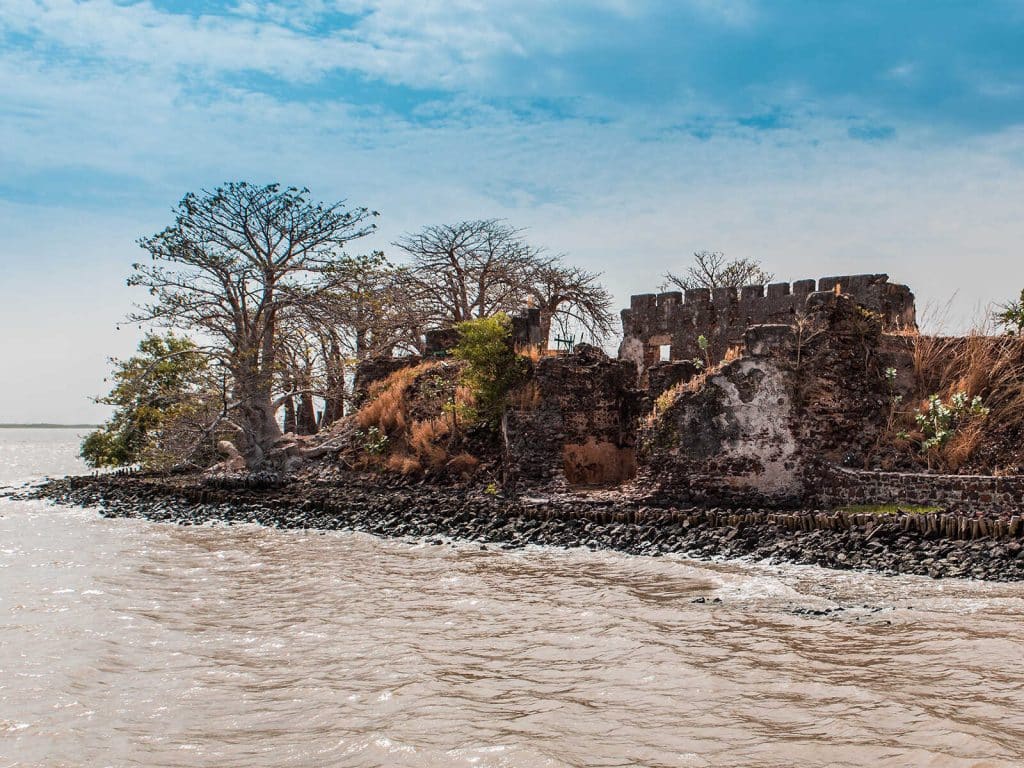
Kunta Kinteh Island, formerly known as James Island, is a historic site in The Gambia that played a significant role in the Atlantic slave trade.
- Major Attractions: A historic island that played a significant role in the Atlantic slave trade, with remnants of colonial buildings and a thought-provoking atmosphere.
- Popular Activities: Exploring the island’s historical sites, learning about the history of the slave trade, and reflecting on the island’s past.
- Famous Dishes: Gambian cuisine, such as benachin, domoda, and chicken yassa.
- Best Time to Visit: November to May for the dry season and more comfortable temperatures.
The island features remnants of colonial buildings, including a fort, a slave house, and a governor’s kitchen.
Visitors can learn about the island’s dark history, the brutality of the slave trade, and the resilience of the African people, making it a thought-provoking and emotionally powerful destination.
26. Kew Gardens (United Kingdom)
Kew Gardens, officially known as the Royal Botanic Gardens, is a world-renowned botanical garden and research institution in London.
- Major Attractions: A world-renowned botanical garden with diverse plant collections, iconic glasshouses, and beautiful landscapes.
- Popular Activities: Exploring the gardens and glasshouses, learning about plant science and conservation, and attending events and exhibitions.
- Famous Dishes: Traditional British fare, such as afternoon tea, scones, and fish and chips.
- Best Time to Visit: April to September for the best weather and vibrant gardens.
The gardens feature an incredible diversity of plant species worldwide, iconic glasshouses like the Palm House and the Princess of Wales Conservatory, and stunning landscapes.
Visitors can learn about the latest developments in plant science, conservation, and sustainable living while enjoying the beauty and tranquility of this historic site.
27. Khajuraho Temples (India)

The Khajuraho Temples are a group of Hindu and Jain temples in Madhya Pradesh, India, famous for their exquisite carvings and erotic sculptures.
- Major Attractions: A group of Hindu and Jain temples famous for their exquisite carvings, intricate details, and erotic sculptures.
- Popular Activities: Admiring the temples’ architecture and artistry, learning about the religious and cultural significance of the carvings, and attending the Khajuraho Dance Festival.
- Famous Dishes: Madhya Pradesh cuisine, such as dal bafla, kebabs, and poha.
- Best Time to Visit: October to March for the best weather conditions, and the Khajuraho Dance Festival in February or March.
The temples, built between the 10th and 12th centuries, showcase the exceptional skill of the Chandela dynasty artisans.
Visitors can marvel at the intricate details and symbolism of the carvings, learn about the religious and cultural significance of the temples, and experience the beauty and sensuality of Indian art.
28. Kızıl Square (Russia)
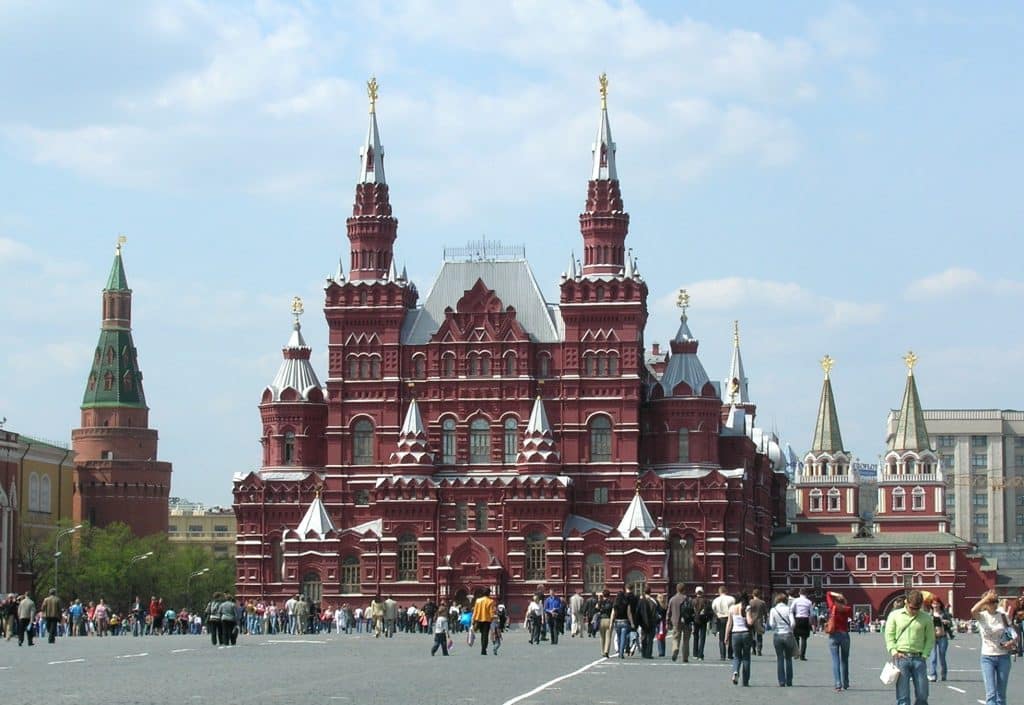
Kızıl Square, located in the heart of Moscow, is one of Russia’s most iconic and historically significant landmarks.
- Major Attractions: An iconic square in the heart of Moscow featuring the Kremlin, Saint Basil’s Cathedral, and the Lenin Mausoleum.
- Popular Activities: Exploring the square’s historic sites, attending cultural events and military parades, and learning about Russian history and politics.
- Famous Dishes: Russian cuisines, such as borscht, pelmeni, and blini.
- Best Time to Visit: May to September for the best weather and cultural events.
The square is bordered by the Kremlin, the official residence of the Russian president, and features other notable landmarks, such as Saint Basil’s Cathedral and the Lenin Mausoleum.
Visitors can witness the changing of the guard ceremony, attend cultural events and military parades, and immerse themselves in the rich history and politics of Russia.
29. Kyaiktiyo Pagoda (Myanmar)
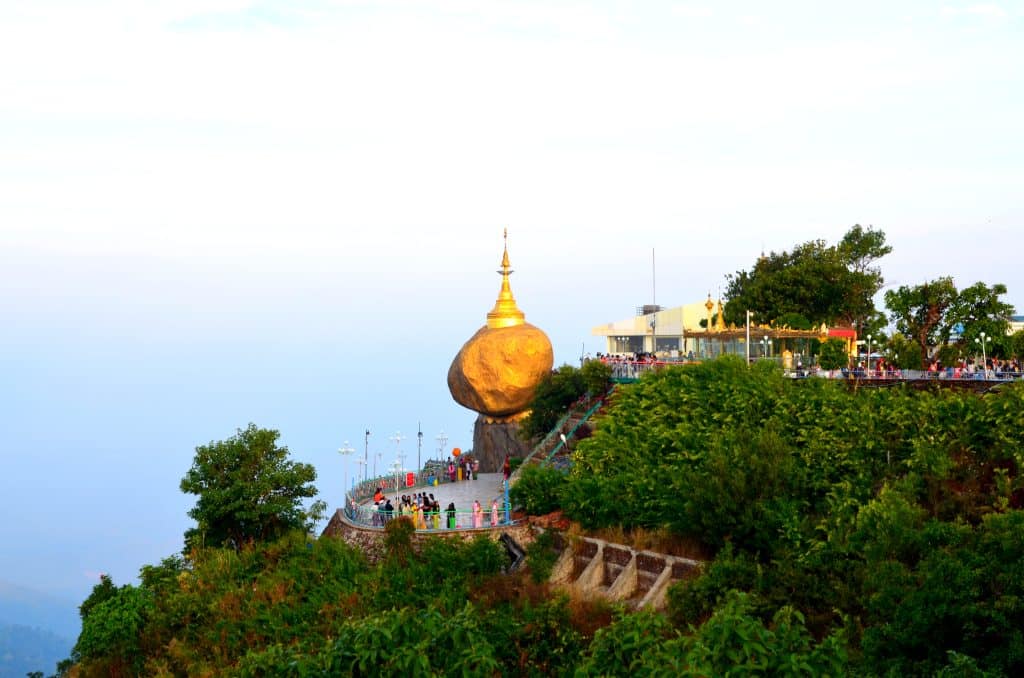
The Kyaiktiyo Pagoda, also known as the Golden Rock, is a sacred Buddhist pilgrimage site in Myanmar, famous for its gravity-defying boulder and golden stupa.
- Major Attractions: A sacred Buddhist pilgrimage site featuring a gravity-defying boulder topped with a golden stupa.
- Popular Activities: Trekking or taking a cable car to the pagoda, offering prayers and donations, and admiring the stunning views of the surrounding landscape.
- Famous Dishes: Burmese cuisine, such as mohinga, laphet thoke, and Shan noodles.
- Best Time to Visit: November to February for the best weather conditions, and the Kyaiktiyo Pagoda Festival in November or December.
The pagoda is built on top of a massive boulder that appears to be precariously balanced on the edge of a cliff, creating an awe-inspiring sight.
Pilgrims and visitors can trek or take a cable car to reach the pagoda, offer prayers and donations, and marvel at the stunning views of the surrounding mountains and valleys.
30. Kjeragbolten (Norway)
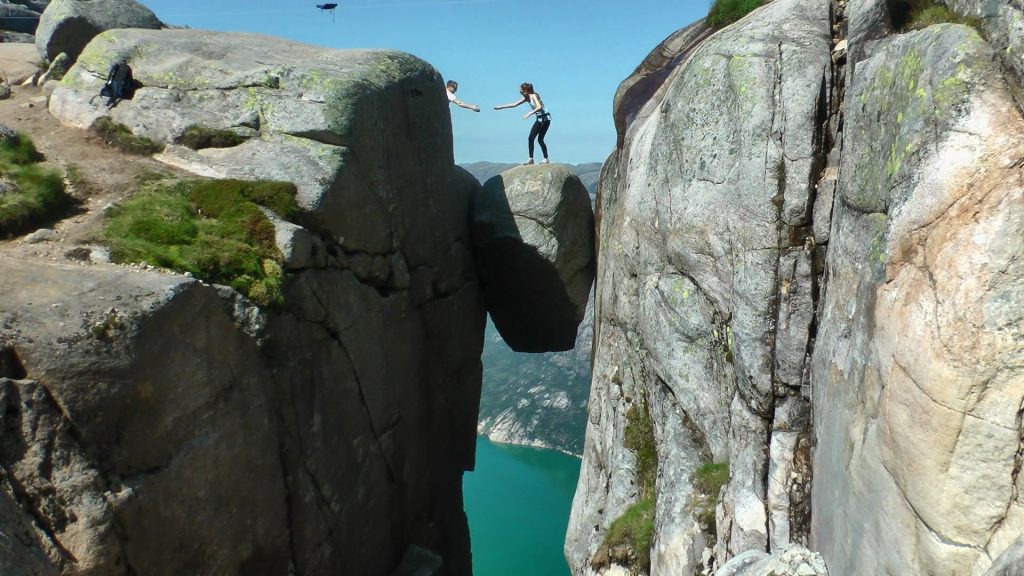
Kjeragbolten is a famous boulder wedged between two cliffs on the Kjerag mountain in Norway. It offers a thrilling and scenic hiking experience.
- Major Attractions: A famous boulder wedged between two cliffs offers a thrilling photo opportunity and stunning views of the Lysefjord.
- Popular Activities: Hiking to the boulder, taking photos, and admiring the breathtaking scenery of the mountains and fjord.
- Famous Dishes: Norwegian cuisine, such as smoked salmon, brown cheese, and lefse.
- Best Time to Visit: June to September for the best weather conditions and accessibility.
The hike to Kjeragbolten is challenging but rewarding, with breathtaking views of the Lysefjord and the surrounding mountains.
Daring visitors can step onto the boulder for a once-in-a-lifetime photo opportunity, while others can simply enjoy Kjeragbolten’s stunning natural beauty and sense of adventure.
Conclusion
Our journey through the fascinating world of famous landmarks and things that start with the letter “K” has taken us across continents and centuries of history.
From the ancient ruins of Krak des Chevaliers to the modern marvels of the Kuwait Towers, these iconic structures showcase the incredible diversity of human achievement and natural wonder.
By exploring these landmarks and discovering other remarkable things that start with “K,” we gain a deeper appreciation for the cultures, traditions, and stories that have shaped our world.
As we reflect on these extraordinary places, we are reminded of the importance of preserving and celebrating our shared heritage.
So, the next time you dream of new adventures, consider embarking on a journey to uncover the captivating landmarks and amazing things that start with “K” – you never know what incredible discoveries await you along the way!



